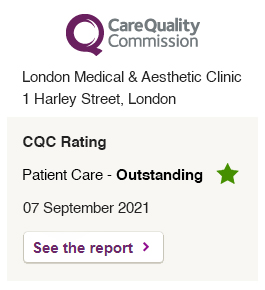We pride ourselves in being one of the leading clinic’s in the treatment of dark circles of the under eye in the UK.
Dark circles under the eyes can be unsightly, and are a common aesthetic concern. They prematurely age the individual and give a tired look to the face. Unfortunately they are often difficult to cover with concealer.
Dark circles, along with puffy eyelids, remain challenging to treat, both surgically and non-surgically. This is because they have many causes and are influenced by genetics.
Cause of Dark Circles
Dark circles under eyes have a great variety of different causes. While alcohol and lack of sleep can both contribute to dark circles under eyes, there are also a number of illnesses that can have this effect, and some people are just genetically predisposed. The combination of a fair complexion and thin skin is often the culprit.
When determining the most effective treatment or combination of treatments for dark circles, it is vital first to identify the cause.
Hyperpigmentation
The pigment melanin is what gives skin its colour. The more melanin the skin produces, the darker it will be.
Constitutional pigment: The degree of pigmentation is genetic, which makes certain ethnicities with increased melanin-pigment production more susceptible, irrespective of outside factors – Black, Asian and Mediterranean skin types are examples of these.
True pigment: Factors such as UV exposure, hormonal shifts (e.g. melasma through pregnancy or birth control) can cause increased pigmentation around the eyes. Also trauma (post inflammatory hyperpigmentation) from atopic eczema for example, or perfumed cosmetics can influence this.
Ageing Volume loss
Volume loss or fat descent in the cheeks, and under eye volume loss, gives form to what is commonly known as the “tear trough”. This is a depression under the eye, which creates a shadow, i.e. dark circle. Although most people form tear troughs as a result of ageing, there are some who have them as a natural deformity from a young age.
Thinning under eye skin
Eyelids present the thinnest skin on the body and with age, skin naturally thins further. This translucent covering affords only a thin veil for the dark, underlying structures, such as the muscle and veins.
Skin Laxity
An ever-decreasing ability to form fresh collagen and elastin sees the skin’s support network diminish. The loss of skin elasticity also allows the darker structures below to the skin to become more visible.
With age, bone reabsorption speeds up causing the eye orbit to enlarge. The fat which houses the eyeball then moves downwards and outwards to fill the space.
Lifestyle
Whilst everyone needs their vices, unfortunately there are some (personally controllable) factors that will lend themselves fiendishly well to dark circles:
Smoking
Smoking causes vascular problems, constricting the blood vessels, resulting in poor circulation and making the blood vessels appear darker and more prominent.
Caffeine and Alcohol Consumption
Too much caffeine and alcohol will lead to dehydration, causing blood vessels to become swollen. They are also detrimental to good quality sleep.
Sleep Deprivation
Lack of sleep can create duller, paler, more translucent skin, illuminating the vessels below. Sleep not only helps keep eyes bright, it also aids the body in repairing cell damage to the skin. Sleep deprivation can also cause fluid to build up beneath the eyes, giving them a puffy appearance. This puffiness can cast shadows under the eyes giving a darker look.
Dietary deficiencies
Dark circles (in conjunction with other symptoms) may be a sign of iron-deficiency anaemia, for example. In the majority of cases, eating the right foods or supplements may treat dietary deficiencies.
Other causes
- Allergies or nasal congestion, inflaming and enlarging the under eye blood vessels
- Some medical conditions (such as thyroid or liver problems)
- Some medications (such as those for high blood pressure)
Treatment Options
Depending on the cause(s) of the dark circles, Dr Ayoubi may recommend one or more of the following treatment options:
Hyaluronic Acid Fillers
Hyaluronic acid fillers have become the key foundation for treating most under-eye dark circles. Hyaluronic acid (HA) is a natural substance found throughout the body, most prominently in the eyes, skin and joints. In the skin, it attracts water, promoting better skin hydration and a fuller appearance. When used under the eyes, hyaluronic acid fillers aim to fill out and smooth the tear trough and consequently reduce the appearance of dark circles.
Suitability
HA fillers are suitable for many patients with dark circles under the eyes. However this treatment is not recommended for patients who have:
- Blood clotting problems
- Active infection in the treatment area
- Active oral or facial herpes infection
- Uncontrolled diabetes
- People who are pregnant or breast-feeding
- Allergy to any components of injectable hyaluronic acid
- HA should be used with caution in people who are receiving immunosuppressive therapy
What to expect
Topical numbing agents or anaesthetic injections can be used to reduce discomfort during the injection process. Ice may also be used before and after treatment to help reduce swelling and discomfort.
The effects of the hyaluronic acid injections are seen immediately. HA fillers are a temporary treatment, and the longevity of the filler varies from patient to patient. For best results, maintenance treatments will be needed.
Safety
As with all treatments, there is a risk of complications and side effects and these will be discussed in detail before commencing any treatment. Hyaluronic acid fillers may cause temporary swelling, bruising, bleeding, redness or the formation of some lumps and bumps.
Uncommon side effects of this treatment include numbness, allergic reactions, infection, blisters and cysts, inflammatory reactions, migration of filler material to another site, bluish discolouration, a small blood vessel becoming blocked, scarring and blindness.
ZO Medical Skin Health Range
The ZO Medical Skin Health range contains active vitamin A and biomimetic proteins to encourage natural collagen production and help restore skin’s elasticity. The exclusive blend of bioengineered plant stem cells provides potent antioxidants and inflammation management to protect against future signs of skin aging.
We also added enzymatic vasodilators, caffeine and coenzyme A to reduce the appearance of puffiness along with optical diffusers to soften the appearance of dark circles. Nourishing shea butter moisturises and replenishes the delicate skin barrier.
Chemical Peels
There are specific, superficial to medium depth chemical peels to target pigment on the delicate eye area in the full range of skin types. The latest peels use synergistic properties to lighten the skin as well as make it stronger and more resilient.
What to expect
Before the procedure, the patient may be asked to prepare the skin with a cream. During the procedure the skin will be thoroughly cleansed. The acid is then painted onto the face and monitored. If burning or stinging is a problem, a cold pack or cold air may be helpful. Patients who find it particularly uncomfortable may choose intravenous anaesthetic, but then would not be able to drive a car for several hours.
The function of a chemical peel is to create an even, controlled shedding of several layers of damaged cells. This exposes a new fresh layer of skin with a more even colour and a smoother texture. In addition, the peel stimulates new cells to grow, thereby tightening the skin, which decreases wrinkling.
After the procedure, ice packs will be applied to the area for comfort. The skin will initially swell and then begin to feel tight. After 3-4 days the outer layer of skin will crust, the peeling off will take 7-10 days to complete. After a week to ten days, fresher looking skin should be apparent and the patient should be sufficiently healed to resume most of their usual activities.
Safety
While complications are uncommon, patients should discuss the risks and possible side effects with the doctor. Complications and side effects of this treatment include:
- Pain – There is usually no discomfort after the peel, but in case there is mild discomfort, pain killers can be taken
- Redness – A pink or red coloration of the skin may persist for several weeks. In rare instances, redness may persist for up to six months. This can occur all over or only in certain spots
- Wound Healing – The peel causes a superficial wound to the skin that takes approximately 5-7 days to heal. Once the surface is treated, it may be pink and may be sensitive to the sun for approximately 2-8 weeks
- Swelling – Immediately after the peel, there will be mild to moderate swelling of the skin. This is a temporary condition and will resolve over two to three days
- Scarring – There is a very small chance of scarring. This includes hypertrophic scars or, very rarely, keloid scars. Keloid scars are very heavy, raised scar formations. To minimise chances of scarring, it is important that the patient follows post-operative instructions carefully. It is important that any prior history of unfavourable healing is reported.
Dark Circle Treatment at our Clinic
Patients travel from all over the UK and from around the world to have Dr Ayham Al-Ayoubi perform treatments to reduce dark circles under eye at the London Medical and Aesthetic Clinic, which is one of the leading training centres for Dermal Filler treatment in the UK and Europe. Dr Ayham Al-Ayoubi may use a combination of treatment options in order to maximise the aesthetic result.














































